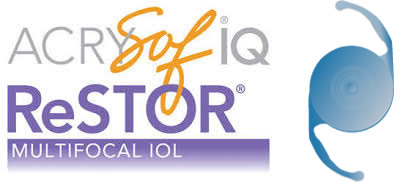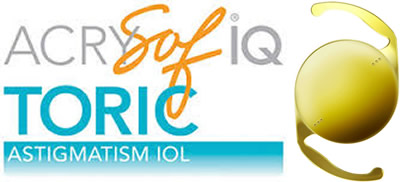Cataract In Vancouver, WA

Most people develop cataracts, a cloudy lens in the eye, simply as a result of aging, with the majority of cases occurring in people over the age of 55. Other risk factors include eye injury or disease, a family history of cataracts, smoking, or the use of certain medications.
For people whose vision is significantly affected by cataracts, lens replacement (cataract) surgery may be recommended. During cataract surgery, the most common surgical procedure in the country, the cloudy lens is removed and replaced with an artificial one called an intraocular lens or IOL.
Symptoms of Cataracts
Because the cloudy lens allows less light to reach the retina, distance and reading vision is often fuzzy and indistinct through the affected eye. Other symptoms of cataracts include diminished color perception (especially blues and purples), annoying glare in sunlight, poor night vision, and excessive glare from oncoming headlights. Frequent changes in eyeglass prescriptions may also be a sign of cataract formation.

Normal Vision
Normal Vision

Cataract vision
With Cataract
What to Do if You’re developing Cataracts
If you suspect a cataract, call our office to schedule a simple, painless, screening exam. Fortunately, today there is a relatively straightforward procedure for the replacement of the eye’s natural, but cloudy, lens with a clear lens implant called an “intraocular” lens.
What Kinds of Treatments are Available for Cataracts
To date, there is no medical treatment to reverse or arrest cataract formation, either in oral or eyedrop medications. The only successful current treatment is the surgical removal of the clouded natural lens. When the natural lens is removed, an artificial lens is inserted in its place: an intraocular lens, also known as an “IOL”, or lens implant.
Cataract Surgery in Vancouver, WA
Cataract surgery removes the cloudy lens and replaces it with a clear artificial lens called an IOL.
We perform minimally invasive, small incision cataract surgery using the standard method called phacoemulsification (“phaco”) surgery. First, the eye is numbed with anesthesia. Then a tiny incision is made in the eye to make room for a small ultrasonic probe. This probe breaks up or emulsifies, the cloudy lens into tiny particles which are then removed from the eye.
After the cloudy lens has been removed, a new artificial lens, or IOL, is implanted in the eye. With the recent advance of foldable IOLs (intraocular lenses), artificial lenses can be implanted through the same small incision from the phaco procedure.
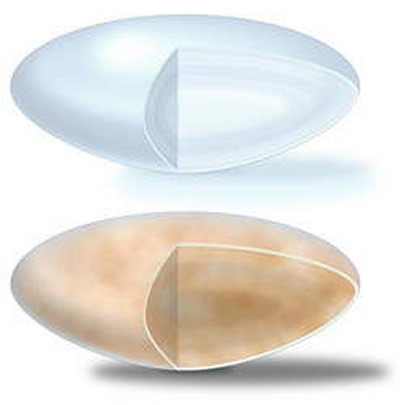
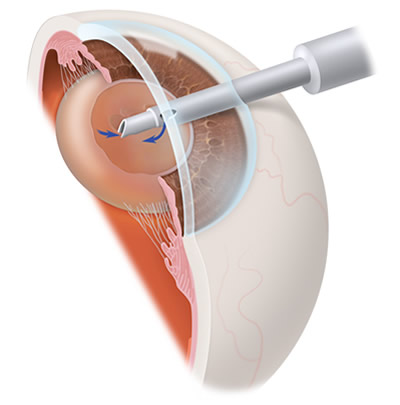
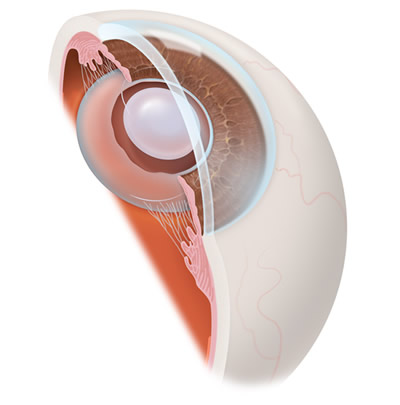
Posterior Capsulotomy
What is the Capsule?
The natural lens of the eye is held in place by a thin clear membrane called the lens capsule. The capsule completely surrounds the lens and separates it from the thick fluid in the back of the eye, called the vitreous, and the thinner fluid in the front of the eye called the aqueous.
Cataract Surgery Effects the Capsule:
Cataract surgery is necessary when the natural lens becomes cloudy and must be removed. When cataract surgery was originally performed, surgical techniques were not as refined as today, and both the natural lens and the capsule were removed during surgery. Newer techniques allow the capsule to remain in the eye and hold the implanted lens (or intraocular lens) in place. Leaving the capsule in place during surgery is a great advancement because it allows the vision after surgery to be more stable and provides for fewer surgical complications.
Sometimes the posterior portion of the capsule becomes cloudy after cataract surgery. The reasons for this cloudiness are unknown. If the posterior capsule becomes so cloudy that it detrimentally affects vision, then a capsulotomy is performed.
What is a Capsulotomy?
A capsulotomy is a procedure in which an opening is created in the center of the cloudy capsule. The opening allows clear passage of the light rays and eliminates the cloudiness that was interfering with the vision. A laser beam is used to create this opening. This procedure is painless, very safe and typically the results can be seen immediately. For capsulotomy, as with any surgery, rare complications can occur, such as swelling or retinal detachment. These complications can cause loss of vision.
A cloudy capsule will many times appear the same way as the original cataract. The vision is cloudy or hazy and the patient is heavily bothered by glare. In fact, vision is so similar that some patients think that the cataract has come back or regrown. This is impossible, cataracts cannot return once the natural lens has been removed.
If your vision is getting worse after cataract surgery, it could be that your capsule is becoming cloudy. Your eye doctor should give you a thorough eye examination to determine the cause of your vision loss. If your capsule is becoming cloudy, our doctors can then determine whether a capsulotomy is necessary to improve your vision.
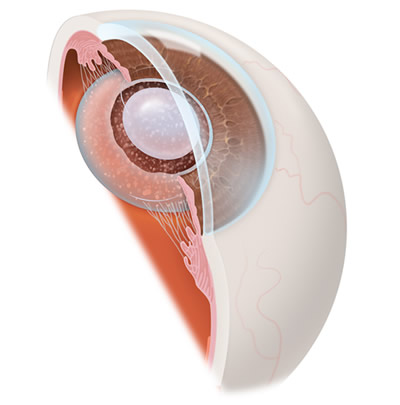
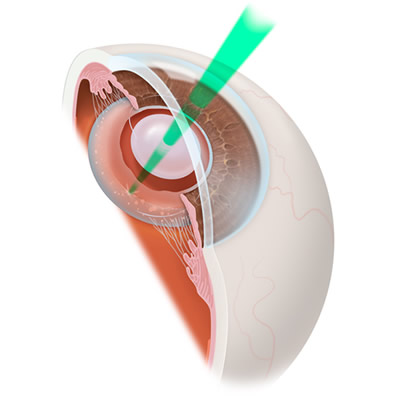
Intraocular Lenses (IOLs)
Intraocular lenses are about the size of Lincoln’s head on a penny and weigh about the same as a kernel of corn. They are polished to the precise curvature needed to bend light rays into focus on the retina at the back of your eye. The lens itself is made of an inert material and is designed to provide good vision for the rest of your life.
ReSTOR® Lens
Physicians have been using flexible IOLs for years to replace the eye’s cloudy lens during cataract surgery and help patients enjoy clear vision again. The ReSTOR® lens improves upon the ordinary IOL by using apodized diffractive technology to provide a full range of focusing distances from near to far. A series of 12 gradual “step heights” of 0.2-1.3 microns each (thinner than a human hair and smaller than a red blood cell) in the center of the IOL create seamless focusing ability, while the peripheral refractive region helps to enhance distance vision. Apodization also allows the lens to work with the pupil to distribute light evenly in the eye in different lighting conditions and activity levels. Alcon® reports that up to 80% of patients who use the ReSTOR lens don’t need glasses after surgery.
AcrySOF Toric IOL
Toric IOLs are specially designed for patients with astigmatism. Traditionally, surgical correction of astigmatism required making a series of small incisions (called LRIs) around the cornea to make it more spherical instead of football-shaped. Implanting toric IOLs often improves vision due to astigmatism without the need for these extra incisions, and also allows patients to enjoy a faster, more comfortable recovery.









